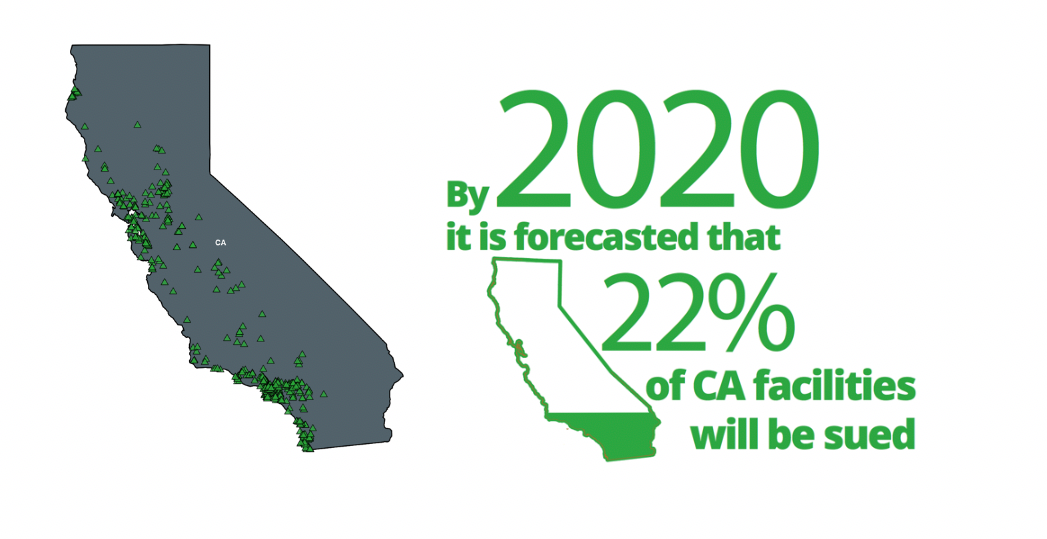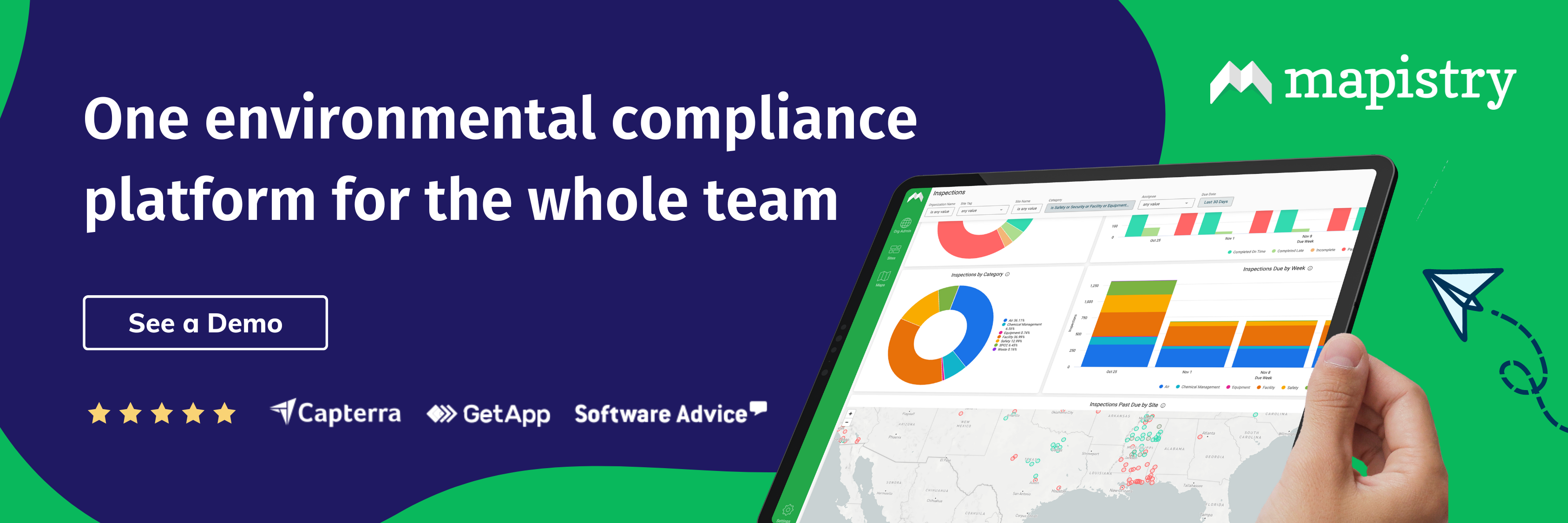2019 is off to an exciting start — not only is Mapistry hitting the ground running launching new products and expanding into new compliance areas, we have also seen a new breadth of challenges enter the environmental compliance space. I had the chance to attend NAEM ’s (National Association of Environmental Managers) Technology and Innovation conference this month in New Orleans! Allie, Mapistry’s CEO spoke about one of these emerging challenges…eReporting! She was joined by Georgia Pacific’s Diedre Sweatman and together, they discussed how mandated online reporting (eReporting from this point forward) is transforming the environmental compliance space. This is a particularly poignant topic and something I am personally passionate about, so I wanted to share some highlights from their presentation.
The eReporting Landscape in Enterprise Environmental Compliance
Before diving in, I first wanted to highlight why this shift to mandated online reporting is so significant to enterprise environmental compliance management. eReporting not only changes how companies manage and operate — it exposes their environmental programs (and deficiencies!) to regulators, NGO’s and ultimately, the world. In the 2014-2017 EPA Next Generation Compliance Strategic Plan the EPA referred to eReporting as a mechanism of enforcement:
“…eReporting will allow regulated entities, government agencies and the public to more quickly identify violations…”. The goal of eReporting is to of course protect the environment and prevent pollution, but eReporting will allow “increased transparency and real time information [to] help us to better protect public health and the environment [and[ assure a level playing field for businesses that play by the rules…”
This quote really captures the essence of where environmental compliance is going and the future is bright! I’ve talked with so many companies that feel their competitors or peers are getting away countless environmental deficiencies…and despite trying to play by the rules they feel frustrated because they keep getting fined. Luckily, as eReporting mandates spread across the country, this trend is definitely leveling the playing field for corporate enterprises and ensuring that everyone is being held accountable.
eReporting in Industrial Stormwater
While eReporting is transcending into all compliance areas, Allie and Deidre’s presentation focused on how eReporting is impacting industrial stormwater. Today, eReporting in accordance to stormwater permits is required in a handful of states California, Washington Kentucky and Florida to name a few. The big theme of their presentation was a changing landscape in stormwater compliance. And because eReporting is already in place in many states, they also touched upon another astonishing trend that has emerged: an increase citizen lawsuits. Due to the increase of stormwater information accessible to the public, thanks to eReporting, provided NGO’s and other citizen groups with a wealth of information, from 2015 to 2018 we saw a 260% increase in lawsuits. For reference, SMARTS , the California Storm Water Multiple Reporting and Tracking System became a requirement in 2015. Because sampling data, SWPPPs, sitemaps and other stormwater information is required to be uploaded to SMARTS in accordance with CA Industrial General Permit, third party groups now had a searchable database to find violations and violators.
 Summary of 60 Day Notices in California
Summary of 60 Day Notices in California
This can paint a pretty bleak picture….California leads the charge with eReporting and its permittees facing a tumultuous legal environment. But, Deidre finished off the presentation with some actionable insights modern industrial companies can take to ensure they are meeting all requirements. Deidre, an Application Lead at Georgia Pacific , she actually began her career as a software developer like Allie! As an Application Lead she works as a liaison between environmental and IT. Deidre detailed how to begin this process of preparing your environmental program for eReporting, the first place to start is in the data department… and GP has some unique challenges. There are multiple business units/channels, multiple locations within each division, lots of data sources internal and external, oh and over 700 users. It’s not easy task, and Deirde outlined GP’s mindset and high level goals.
- Be able to do something with the data – this is where change is derived, understanding where your company is now is the biggest indicator and variable in how to achieve change
- Gain actionable insights
- Improve accuracy and transparency
- Increase efficiency and flexibility
As they moved forward GP followed these guidelines as they slowly, but surely began the process:
- Look to the past as a reminder of what NOT to do, BUT….
- Identify the key places to begin
- Start small and build up
- Be honest and willing to step back – you might be surprised
- Engage key players NOW
Of course, the biggest take away Deirde provided is that no matter what process you change, software you buy or data you manipulate it has to work for your company! And remembering throughout the process is key to providing a comprehensive and defensible solution.
eReporting is here to stay!
Engaging and evolving with eReporting is key for companies like Georgia Pacific to build a world class and defensible environmental program. eReporting is changing environmental compliance and as you look to change your program – don’t forget it has to work for your company! At Mapistry, we’re helping companies like Georgia Pacific build next generation environmental compliance programs (stormwater, SPCC, hazardous materials, etc.) by harnessing the power of our platform — it’s data-driven, completely automated, efficient, and compatible with mandatory eReporting formats. Hopefully, I’ll see you at the next NAEM or conference and stay tuned for more updates as the EPA gears up to unleash eReporting into other environmental areas.
